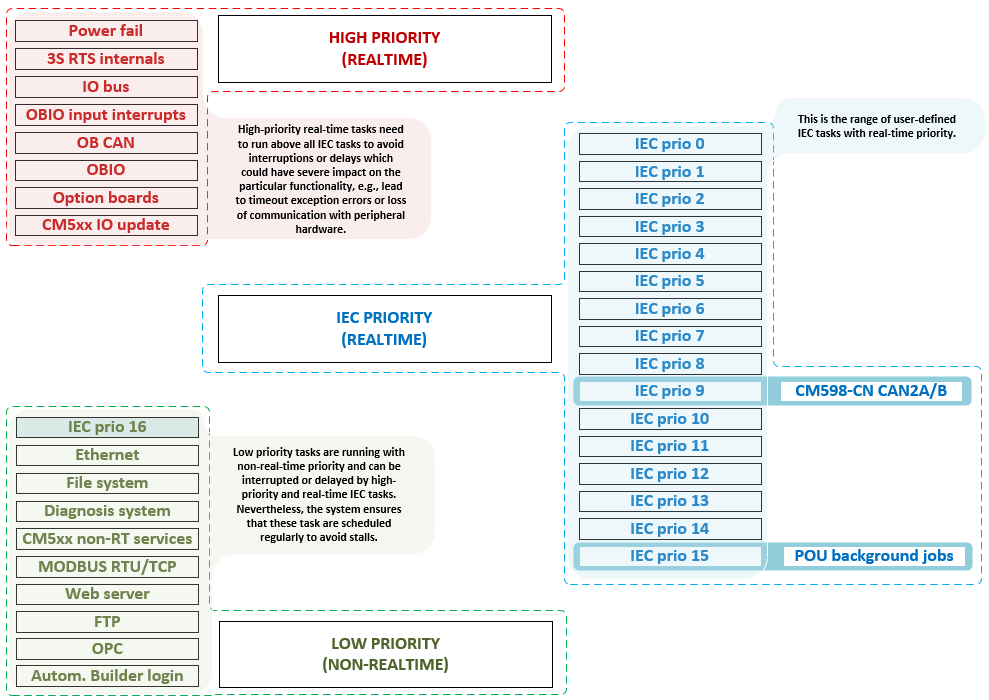Communication schema “Default” is the default schema selected when creating a new application. It is the recommended setting to start with and suitable for most applications.
The schema leads to a well balanced task priority setup which lays focus on stability and low risk of negative side effects caused by high IEC task load or hardware activity.
The highest IEC task priority 0 should be used for high prior functions in the PLC with short execution time.
The communication modules interrupts (CM5xx), the I/O bus, the IEC scheduler observer task and the CAA event task are processed with higher priority than all user IEC tasks.
Ethernet runs with non-real-time priority to avoid denial-of-service scenarios and system overload caused by devices located in the same network.
The default setting of the priorities is suitable for most applications and should be used unless there are special requirements or performance issues.
Features and their priorities
In this schema, the range of IEC task priorities is only shared with tasks related to CM598-CN (CAN communication module) and its CAN2A/2B IO POUs and common POU background job handling. The priorities 9 and 15 can still be used though.
Note that tasks above IEC task priority 9 might have negative side effects on CAN communication in terms of reaction time and throughput, while IEC tasks with priority lower than 9 might be interrupted or delayed by an active CAN communication.
POU background jobs are assigned the lowest IEC real-time priority to avoid negative side effects on IEC tasks and thus on process data synchronization or user code. POUs usually are related to tasks of lower priority and shall not have an impact on higher priority tasks.






